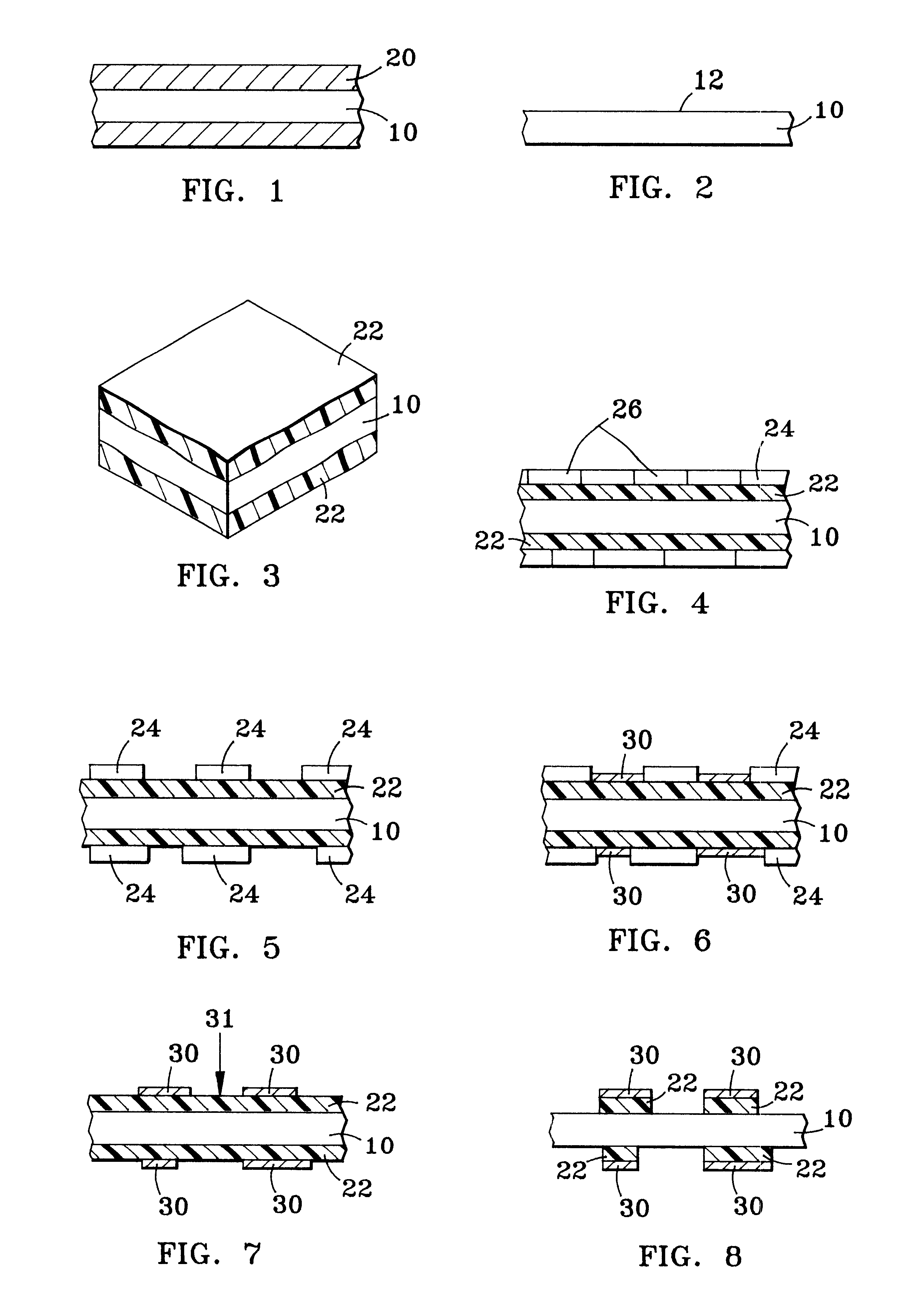Process for removal of undesirable conductive material on a circuitized substrate and resultant circuitized substrate
a technology of undesirable conductive material and circuitized substrate, which is applied in the field of circuitized substrates, can solve the problems of electrical shorting between the circuit features of the finished circuit pattern, insufficient attention, and further electrical shorting
- Summary
- Abstract
- Description
- Claims
- Application Information
AI Technical Summary
Benefits of technology
Problems solved by technology
Method used
Image
Examples
Embodiment Construction
FIGS. 1-8 depict a process for removal of undesirable conductive material on a printed circuit and the resultant printed circuit. The undesirable conductive material is a catalyst material and circuit material that has seeped between the circuit lines under the catalyst material during processing. The undesirable conductive material causes electrical leakage problems if not removed.
FIGS. 1 and 2 show an optional step for preparing a surface of a substrate 10 before coating with a catalyst layer 22. The substrate may be any of a variety of dielectric substrates, including thermoplastic and thermosetting resins, glass and ceramics. Typical thermosetting polymeric materials include epoxy, phenolic base materials, polyimides, and fluoropolymers. The dielectric substrate may be molded from polymeric materials which may or may not include reinforcement. Presently, preferred substrates include epoxies, polyimides, and fluoropolymers. In particular, FIG. 1 depicts a substrate laminated betw...
PUM
| Property | Measurement | Unit |
|---|---|---|
| concentrations | aaaaa | aaaaa |
| time | aaaaa | aaaaa |
| conductive | aaaaa | aaaaa |
Abstract
Description
Claims
Application Information
 Login to View More
Login to View More - R&D
- Intellectual Property
- Life Sciences
- Materials
- Tech Scout
- Unparalleled Data Quality
- Higher Quality Content
- 60% Fewer Hallucinations
Browse by: Latest US Patents, China's latest patents, Technical Efficacy Thesaurus, Application Domain, Technology Topic, Popular Technical Reports.
© 2025 PatSnap. All rights reserved.Legal|Privacy policy|Modern Slavery Act Transparency Statement|Sitemap|About US| Contact US: help@patsnap.com


